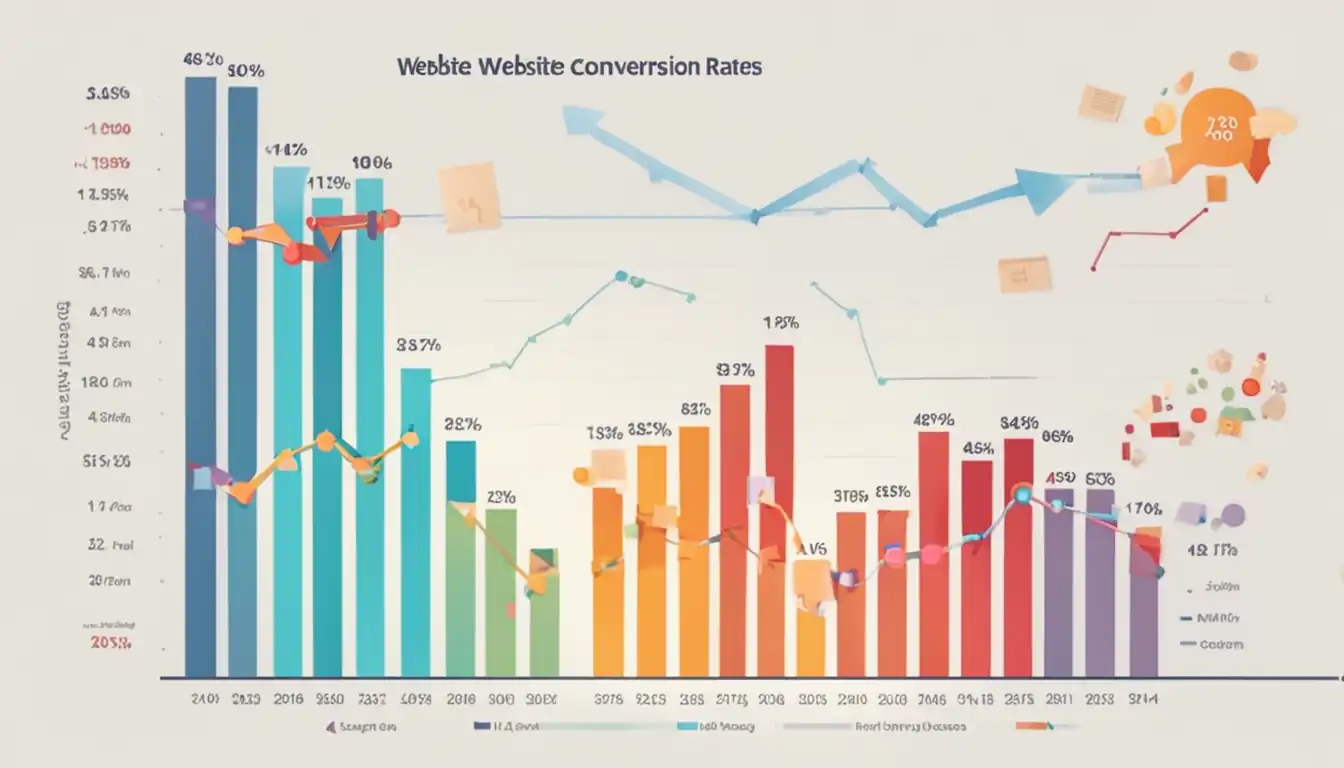Content Conversion Rate Optimization for SEO

In the world of SEO, content is king. But what good is great content if it's not converting visitors into customers? That's where Content Conversion Rate Optimization comes in. By fine-tuning your content to drive more conversions, you can maximize the impact of your SEO efforts and see real results. Let's dive into how you can optimize your content for better conversion rates.
Understanding Content Conversion Rate Optimization
What is Content Conversion Rate Optimization?
Content Conversion Rate Optimization (CRO) is the process of optimizing your website content to increase the percentage of visitors who take a desired action, such as making a purchase, signing up for a newsletter, or filling out a contact form. By analyzing user behavior and making data-driven decisions, you can improve the effectiveness of your content in driving conversions.
Why It Matters in SEO
Content Conversion Rate Optimization is crucial for SEO because it not only helps improve user experience and engagement on your site, but it also signals to search engines that your content is valuable and relevant to users. By increasing conversion rates, you are likely to see improvements in key SEO metrics such as bounce rate, time on page, and ultimately rankings on search engine results pages. In essence, CRO helps bridge the gap between creating high-quality content and achieving tangible business results through increased conversions.
Key Strategies to Enhance Your Content's Conversion Power
Tailoring Content to Audience Intent
When it comes to optimizing content for conversion, one of the key strategies is tailoring the content to match the intent of your target audience. By understanding what your audience is looking for and delivering content that meets their needs, you can increase the likelihood of conversion.
Key Points:
- Conduct thorough research to understand the intent behind different search queries.
- Create content that addresses specific pain points or questions your audience may have.
- Use language and tone that resonates with your target audience.
Using Data-Driven Insights for Content Creation
Data-driven insights play a crucial role in optimizing content for conversion. By analyzing data related to user behavior, engagement metrics, and conversion rates, you can identify areas for improvement and make data-backed decisions when creating or optimizing content.
Key Points:
- Utilize tools like Google Analytics to track user behavior on your website.
- Analyze conversion funnels to identify drop-off points and optimize accordingly.
- A/B test different variations of content to see what resonates best with your audience.
Technical SEO Enhancements for Better Conversion Rates
When it comes to optimizing your content for better conversion rates, technical SEO enhancements play a crucial role. Here are some key areas to focus on:
Optimizing Page Speed and Mobile Usability
Page speed and mobile usability are not only important ranking factors for search engines but also critical for improving user experience and increasing conversion rates. Slow-loading pages can lead to high bounce rates, which in turn can negatively impact your conversions. Here are some tips to optimize page speed and mobile usability:
- Compress images and minify CSS and JavaScript files to reduce loading times.
- Implement lazy loading for images and videos to prioritize above-the-fold content.
- Use responsive design to ensure your website is mobile-friendly.
- Test your website on different devices and browsers to identify any issues that may affect user experience.
Structuring URLs and Meta Tags Effectively
URLs and meta tags are essential elements of on-page SEO that can impact both search engine rankings and click-through rates. When optimizing these elements for better conversion rates, consider the following:
- Keep URLs short, descriptive, and keyword-rich to improve visibility in search results.
- Include target keywords in meta titles and descriptions to attract clicks from users.
- Use compelling language in meta tags that entices users to click through to your website.
By focusing on these technical SEO enhancements, you can create a solid foundation for improving your content conversion rates.
Crafting Compelling Calls-to-Action

Crafting compelling calls-to-action (CTAs) is crucial for improving content conversion rates. CTAs are the gateway to converting website visitors into leads or customers. Here are some key elements to consider when creating effective CTAs.
Elements of an Effective CTA
- Clarity: Make sure your CTA is clear and concise, telling users exactly what action you want them to take.
- Visibility: Ensure that your CTA stands out on the page with contrasting colors, bold fonts, or strategic placement.
- Relevance: Your CTA should be relevant to the content on the page and offer value to the user.
- Urgency: Create a sense of urgency by using time-sensitive language or limited-time offers in your CTA.
- Action-Oriented Language: Use strong action verbs that prompt users to take immediate action, such as "Buy Now" or "Download Your Free Guide."
Positioning and Testing CTAs for Maximum Impact
The placement and testing of CTAs can significantly impact their effectiveness in driving conversions. Here are some tips for maximizing the impact of your CTAs through positioning and testing.
"Positioning your CTAs strategically can lead to higher conversion rates."
- Above the Fold: Place CTAs above the fold so they are immediately visible without requiring users to scroll down.
- In-Line with Content: Insert CTAs within the flow of your content where they make sense contextually.
- At the End of Content: Include a CTA at the end of your content to capture users who have engaged with your material.
- A/B Testing: Test different variations of your CTAs, including copy, color, size, and placement, to determine which performs best.
- Heatmap Analysis: Use heatmap tools to track user behavior and identify optimal placements for CTAs based on user engagement.
By implementing these strategies for crafting compelling calls-to-action and optimizing their positioning through testing, you can improve content conversion rates and drive more valuable actions from your website visitors.
Measuring the Success of Your Optimization Efforts

Content Conversion Rate Optimization for SEO is a crucial aspect of any digital marketing strategy. To ensure that your efforts are paying off, it is essential to measure the success of your optimization endeavors.
Tools and Metrics to Track Conversion Performance
When it comes to measuring the success of your content conversion rate optimization efforts, there are several tools and metrics that can help you track performance effectively. Some key tools and metrics include:
Google Analytics: This tool provides valuable insights into website traffic, user behavior, and conversion rates. By tracking metrics such as bounce rate, session duration, and goal completions, you can gain a better understanding of how well your content is converting.
Heatmaps: Heatmap tools like Crazy Egg or Hotjar allow you to visualize user interactions on your website. By analyzing where users are clicking or scrolling, you can identify areas for improvement in your content layout and design.
A/B Testing: Conducting A/B tests using tools like Optimizely or Google Optimize can help you determine which variations of your content perform best in terms of conversion rates. This data-driven approach allows you to make informed decisions about optimizing your content for better results.
Interpreting Data to Further Refine Strategy
Once you have collected data on the performance of your content conversion rate optimization efforts, it is crucial to interpret this data effectively in order to refine your strategy for better results. Here are some key steps to consider:
"Data interpretation is key in refining your content conversion rate optimization strategy."
Identify Patterns: Look for patterns in the data that indicate what is working well and what needs improvement. For example, if certain types of content consistently lead to higher conversion rates, focus on creating more of that content.
Set Goals: Establish clear goals based on the data analysis findings. Whether it's increasing click-through rates or improving lead generation, setting specific goals will help guide your optimization efforts in the right direction.
Iterate and Test: Continuously iterate on your content optimization strategies based on data insights and test new ideas to see what resonates with your audience. By staying agile and responsive to changes in performance metrics, you can adapt quickly to improve conversion rates over time.
By leveraging tools and metrics to track conversion performance and interpreting data effectively, you can refine your content conversion rate optimization strategy for better SEO results.